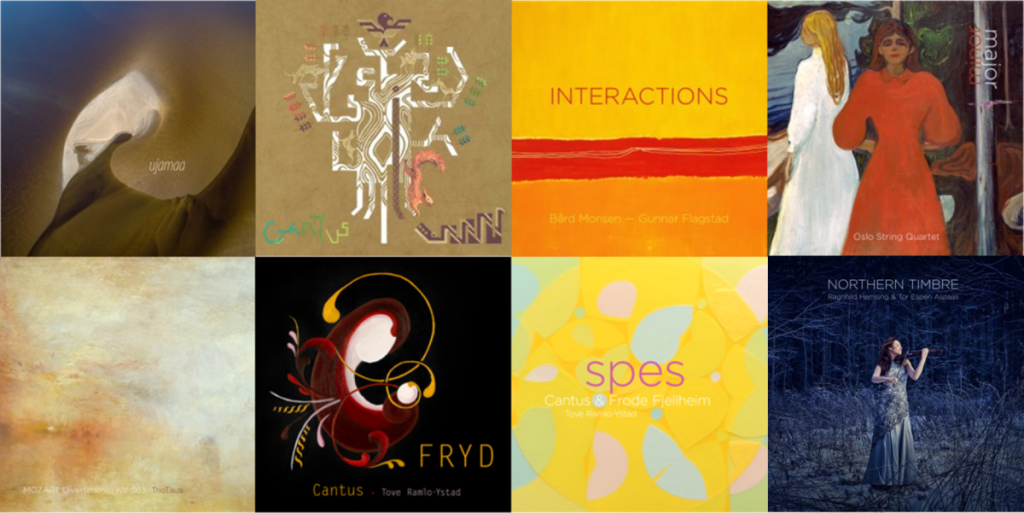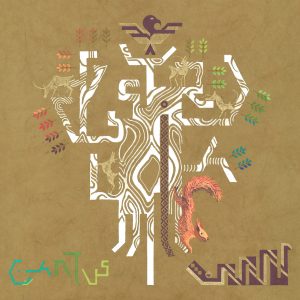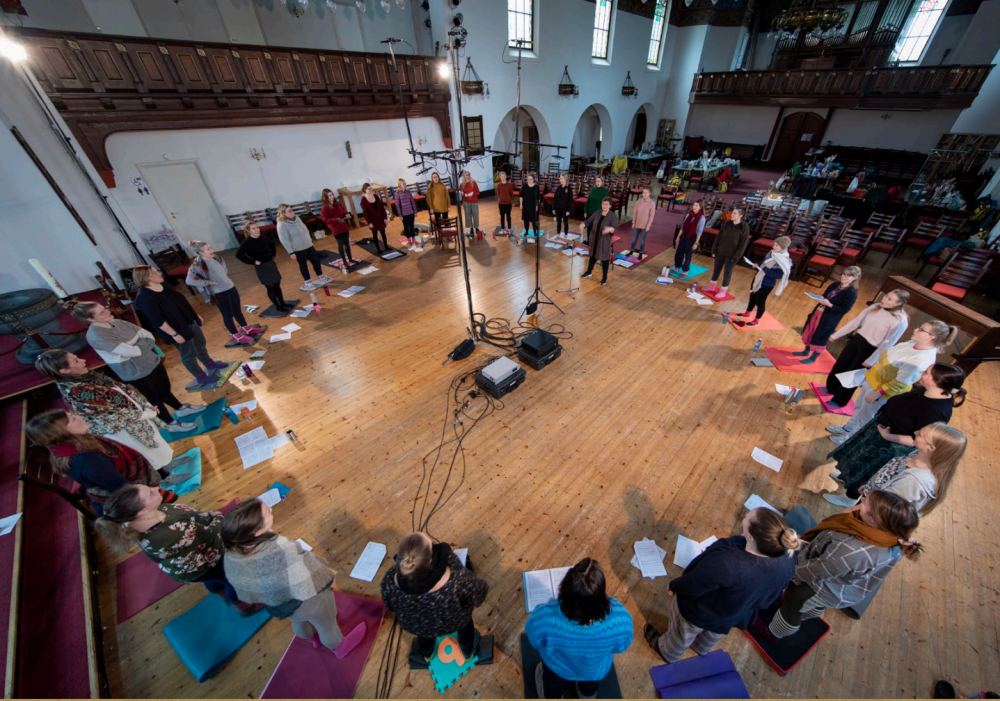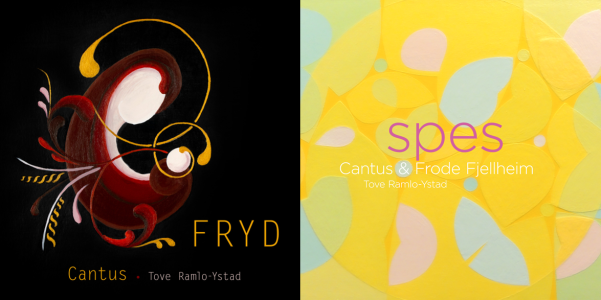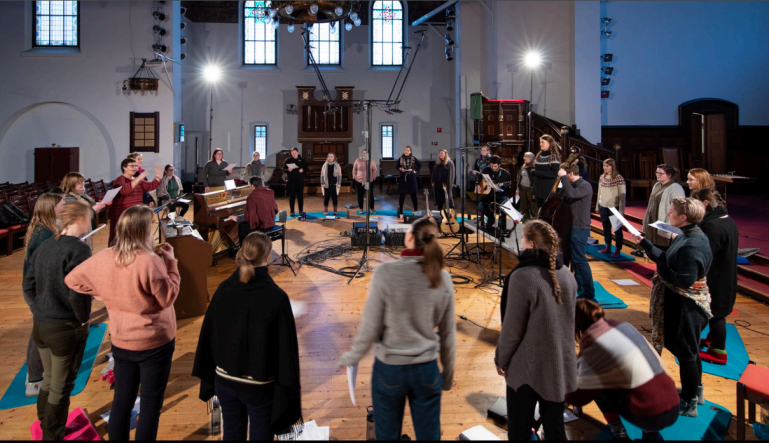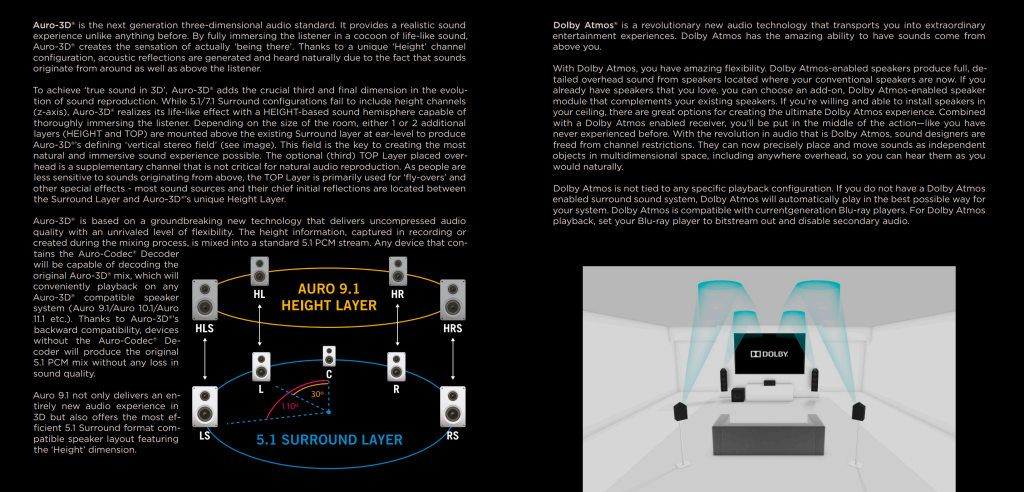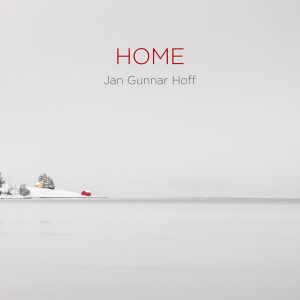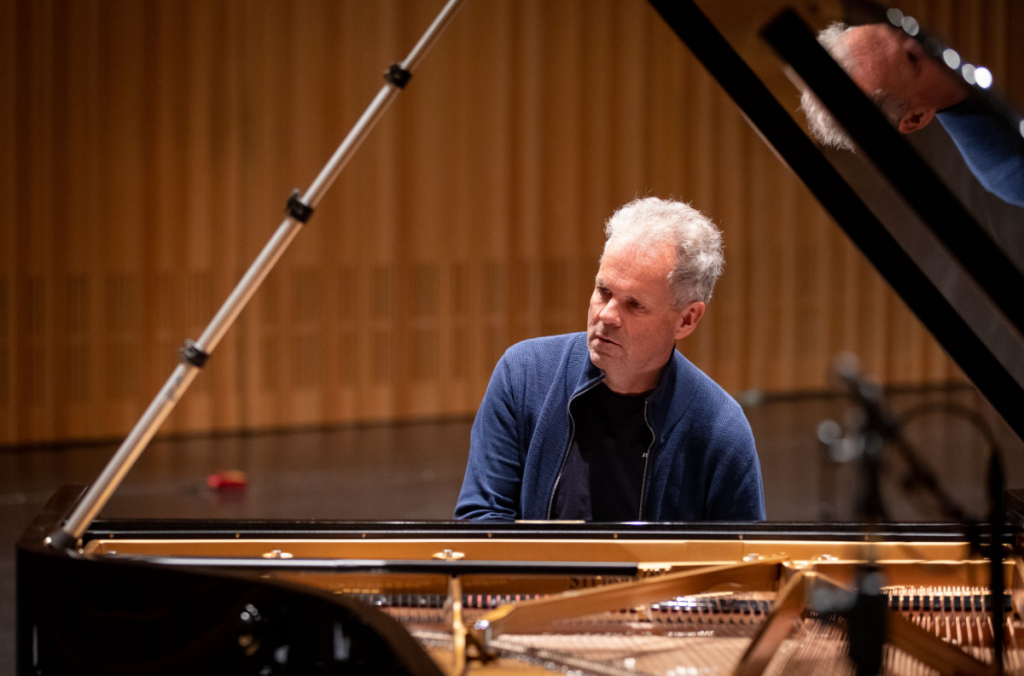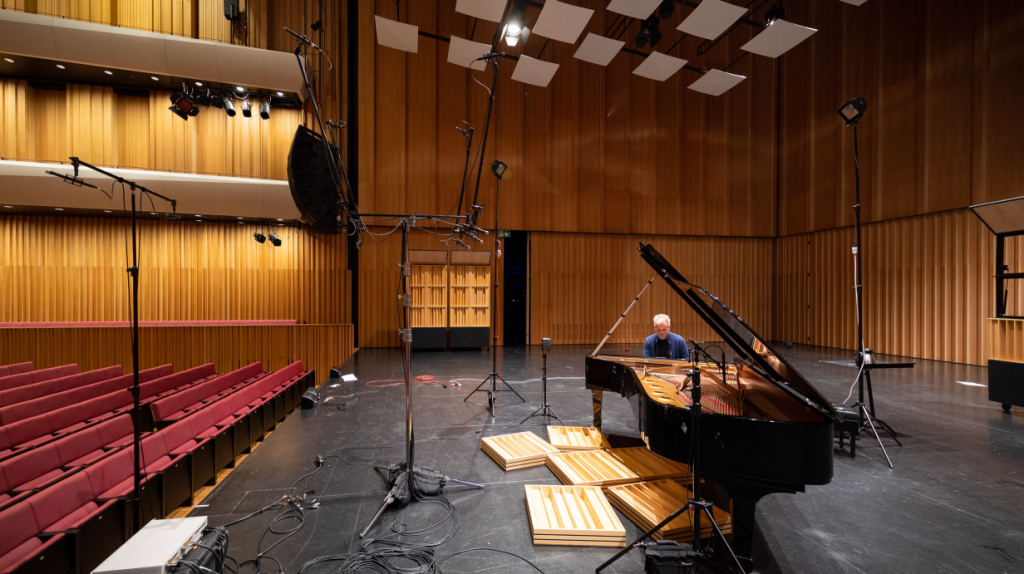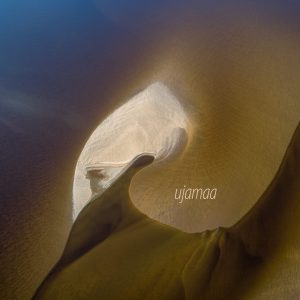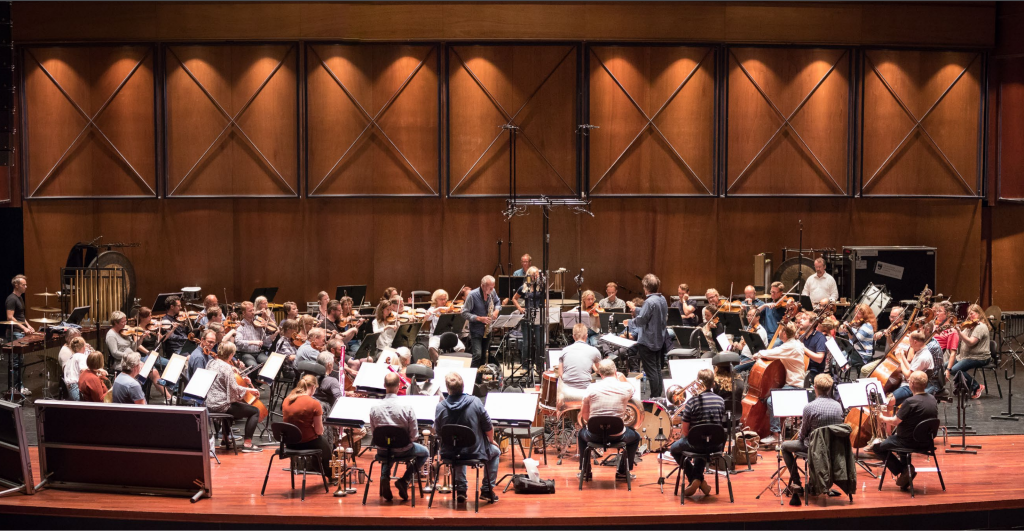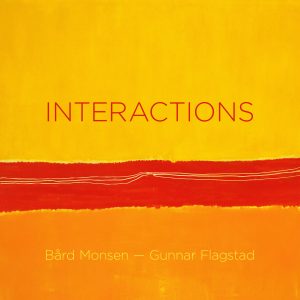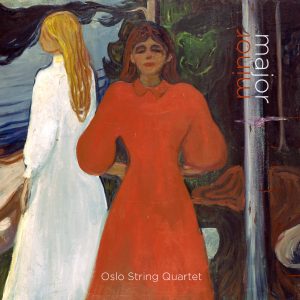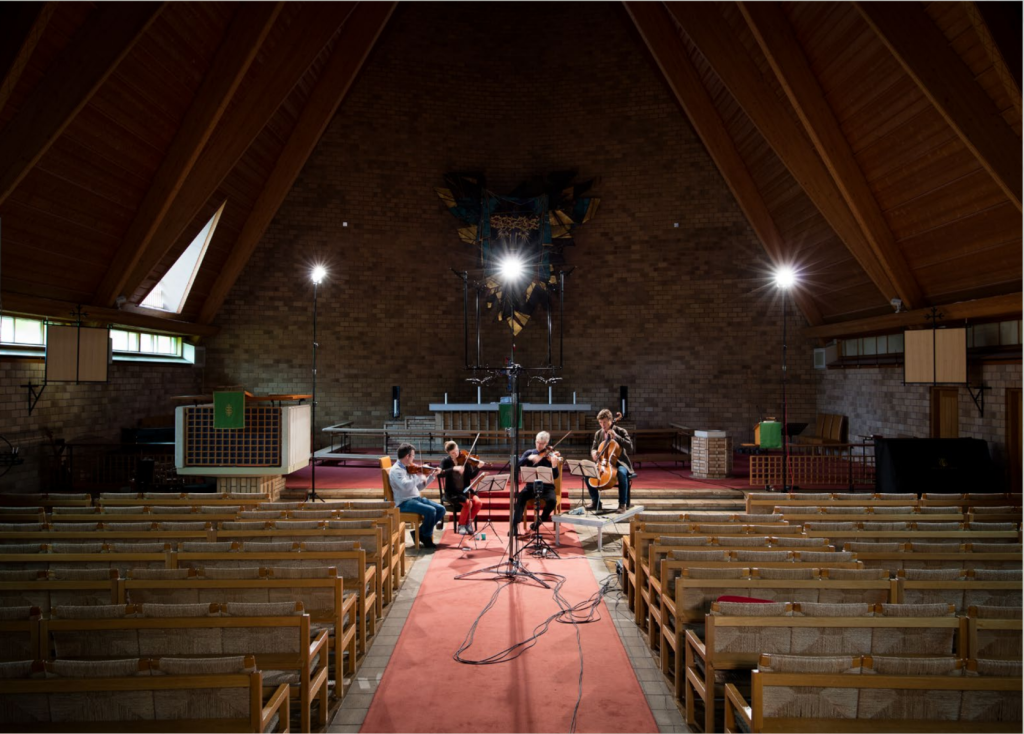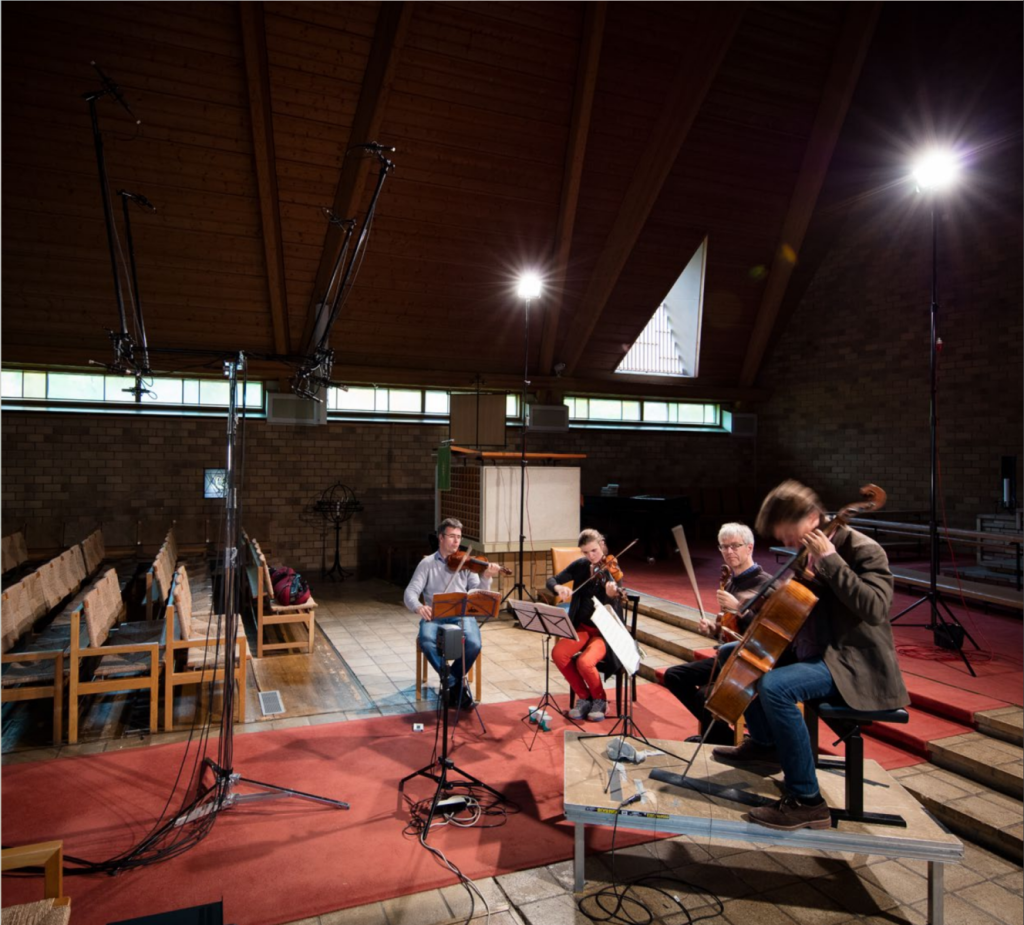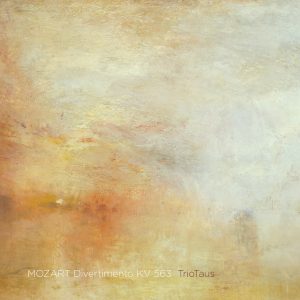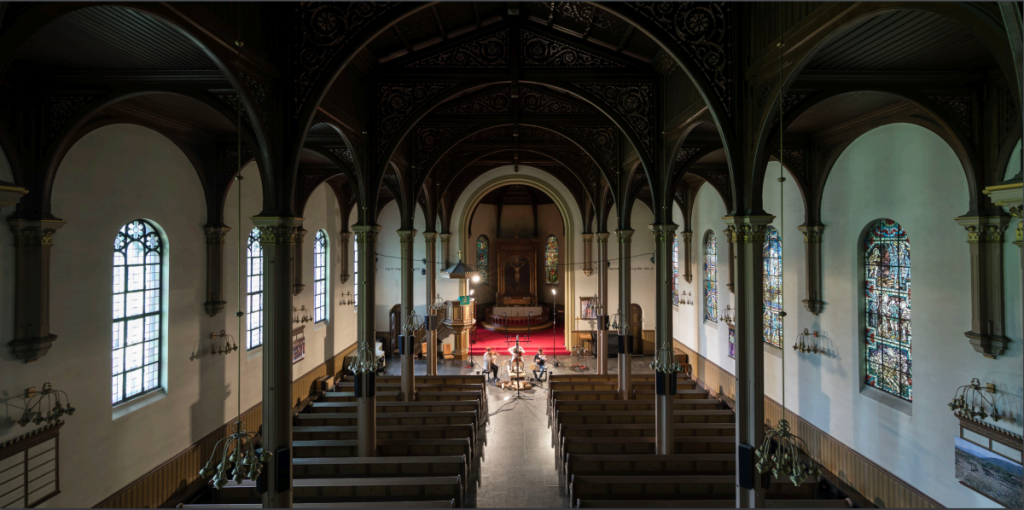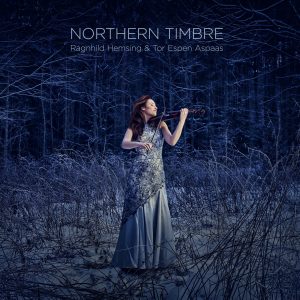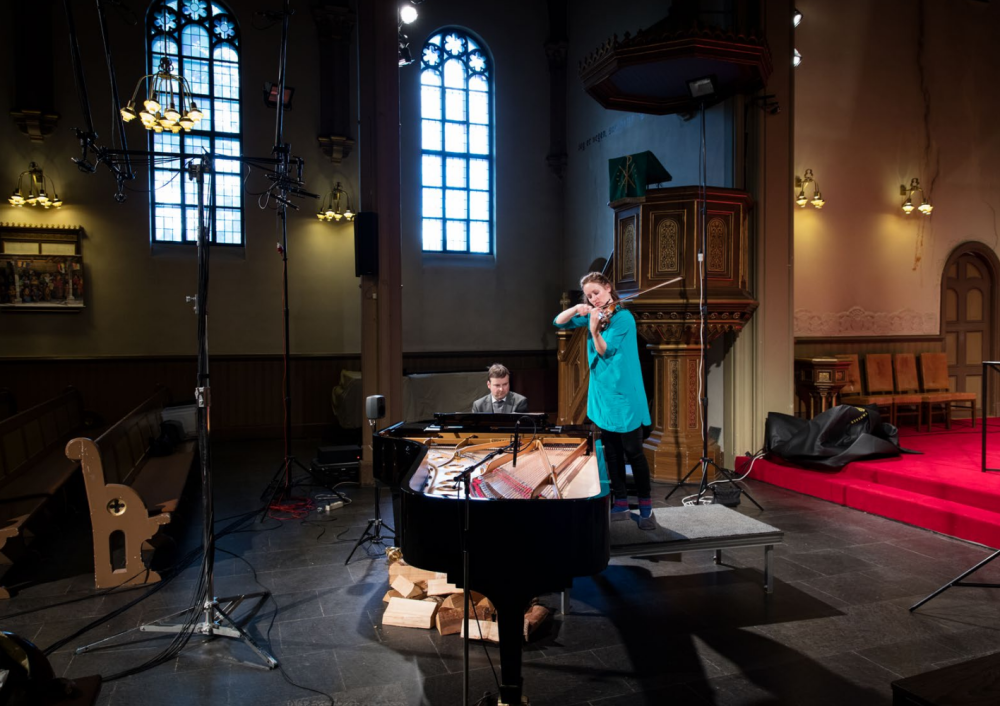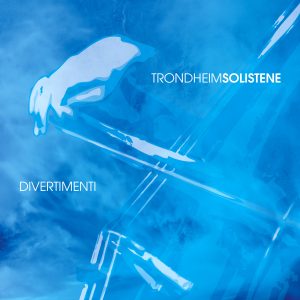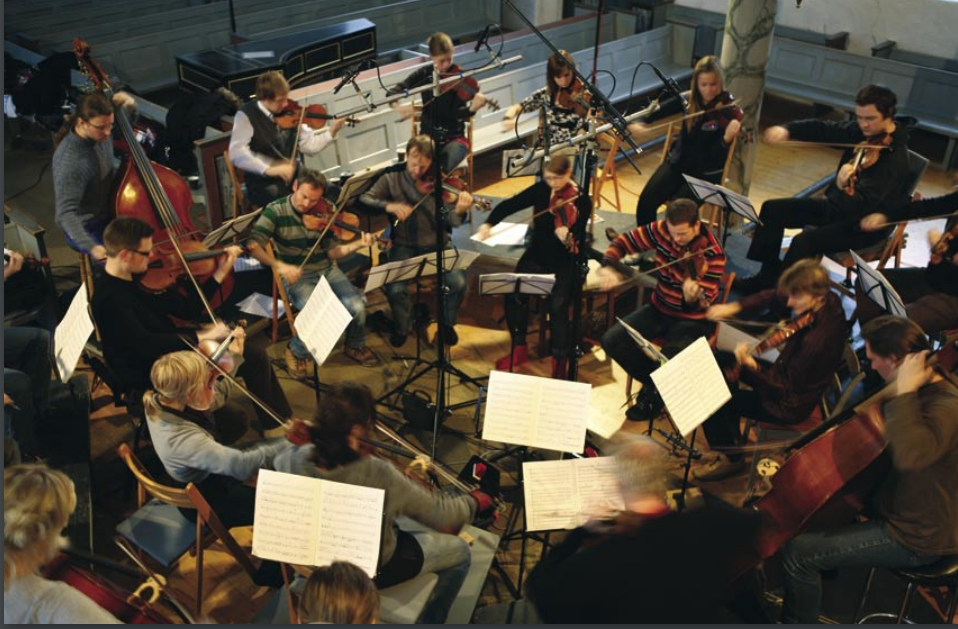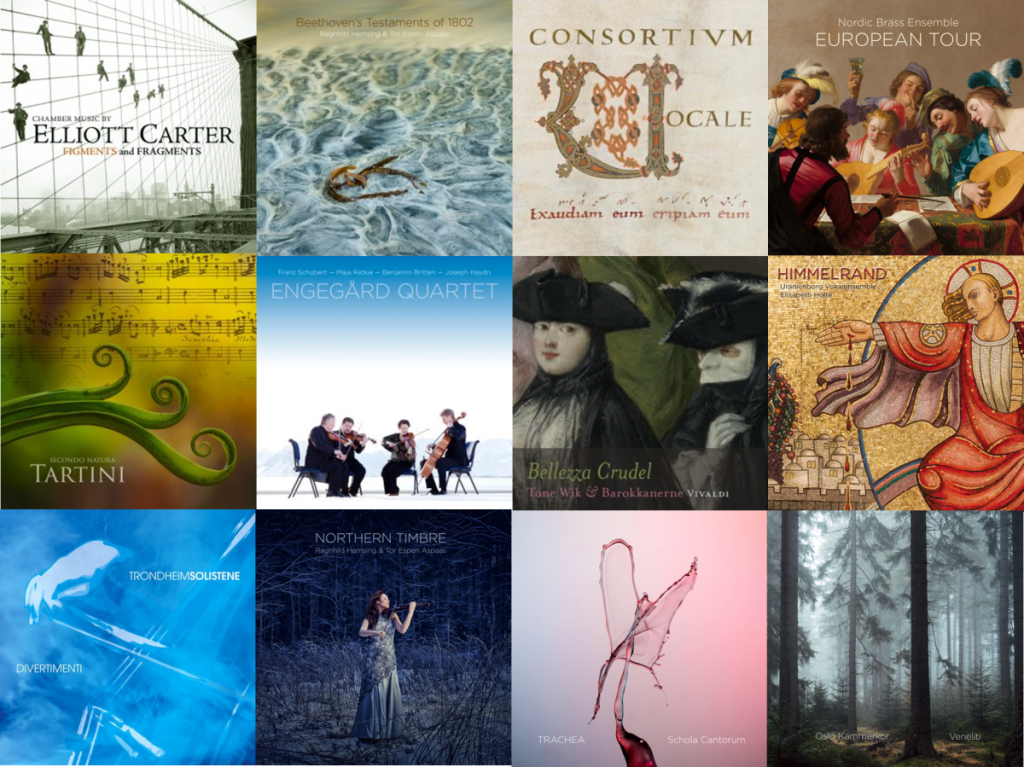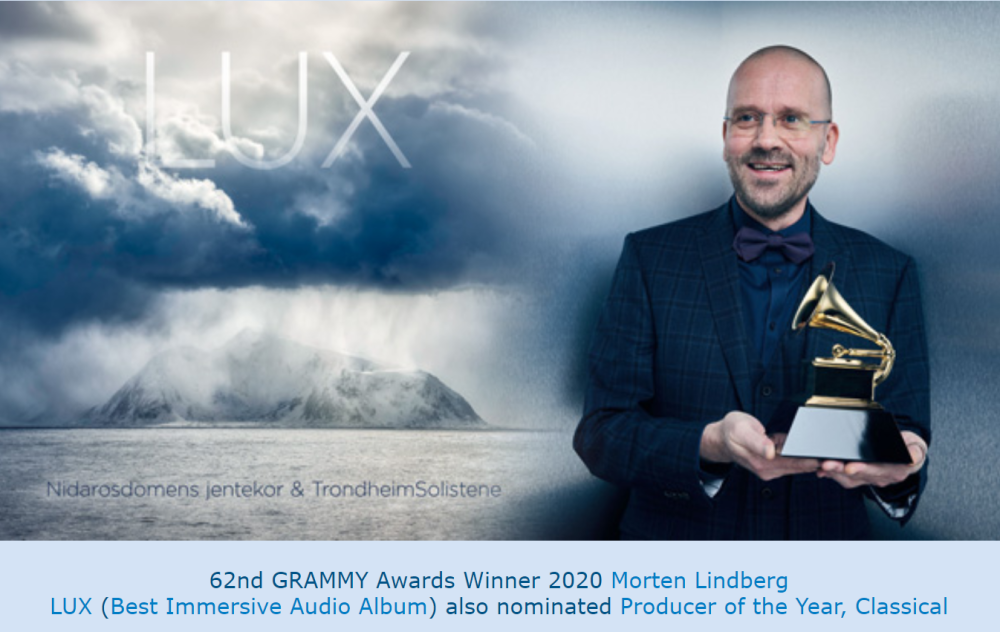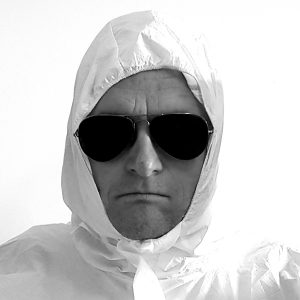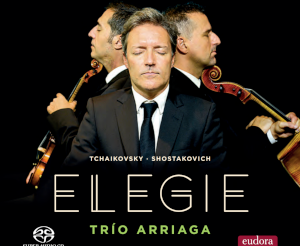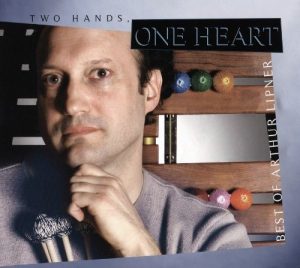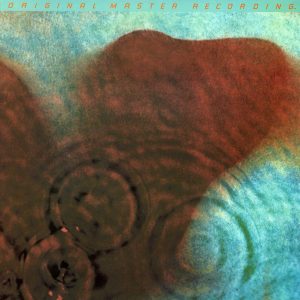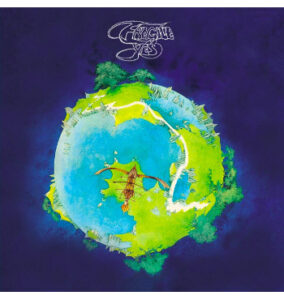Recording label 2L and its well-respected producer and recording engineer Morten Lindberg are known for their surround-sound recordings, with multiple GRAMMY Awards and Nominations. If you have multichannel playback capability, and if music in the round is your thing, 2L's recordings are some of the best recordings in that style. I listen only to stereo and still find them immensely enjoyable in 2-channel format.
Morten Lindberg comments about his recordings: "2L (Lindberg Lyd) records in spacious acoustic venues: large concert halls, churches and cathedrals. This is actually where we can make the most intimate recordings. The qualities we seek in large rooms are not necessarily a big reverb, but openness due to the absence of close reflecting walls. Making an ambient and beautiful recording is the way of least resistance. The real challenge is to find the fine edge between direct contact and openness! A really good recording should be able to bodily move the listener."
Since my listening is to stereo only, I can't offer any informed opinion about 2L's surround sound or immersive audio releases. Since each of these is additionally released in standard stereo, that is the format to which I've listened and can comment. For those of you who do listen in surround sound, note that the 2L 5.1 channel downloads from NativeDSD are available in DXD and DSD256. (This is the case with most other labels in the NativeDSD catalog, as well.) Also available is the 9.1 channel Auro-3D standard for truly three-dimensional sound, but only in 24-96kHz as required by that standard (see footnote below). Additionally, 2L sells and delivers all its formats worldwide through its own Shop 2L Music Store, where they have now expanded the immersive formats to include discrete Channel 7.1.4 DXD WAV and Dolby Atmos True HD in MKV. See 65th Grammy winner for immersive audio, Tuvahun, at the bottom of this article, for example.
Below are my impressions of several 2L releases that I highly recommend. There are many more than just these.
Yggdrasil, Cantus, 2L Records 2022 (DXD, DSD256) HERE
This album from 2L has received a lot of recognition among those who listen to surround/multichannel as an "immersive" recording (see recording session photo below). I can only hear it in 2 channel, but even here it works beautifully as a very engaging performance and recording. The choral group Cantus is superb. The recording, as always with Morten Lindberg, is supremely clean, detailed and transparent. What a pleasure to hear!
Yggdrasil is Cantus' third album produced by Morten Lindberg on the 2L label. It follows Spes released in 2015 (HERE) and Fryd in 2019 (HERE), both albums Grammy Nominees in the Best Immersive Audio Album category.
The Yggdrasil is the world tree in Norse mythology. Cantus conceived this album as travelling the branches of Yggdrasil and reaching out to composers from near and far, embracing the concept of gathering around the tree as a common theme. They write, "We envisioned the richness and complexity of Yggdrasil as giving these composers the freedom to fill their compositions with ideas, reflections, stories and references connected to 'world trees'—however they might interpret this—from their own lives. We hoped this would generate wide diversity in musical expression and content."
The result of their multi-year effort gathering these compositions is an album of great diversity, made whole through the beauty of their exquisite choral singing.
Yggdrasil recording session, Lademoen Church, Trondheim, Norway 2018-2021
Also performed by Cantus are the two exceptionally fine recordings below.
Fryd is a collection of traditional carols and songs for the Christmas season. It has the quite delightful addition of guitar, double bass, piano and harmonium for a very intimate sound in a the same large acoustic space of Lademoen Church, Trondheim, as Yggdrasil. Beautifully sung by Cantus.
Spes explores what happens when traditional Sami music meets mainstream western sacred music. As Cantus writes in the enclosed booklet, "In collaboration with composer and musician Frode Fjellheim, the choir explores a new and little-known musical world, a world with a wide range of emotions: sorrow, joy and vulnerability. Through these songs, sounds and musical forms—some familiar, others scarcely known—Cantus challenges both itself and its audience with a repertoire which, while being striking in its variety, is united in one thing: its expression of hope." Once again we are treated to beautifully sung compositions captured is excellent ethereal sonics by Morten Lindberg. It is all simply magical.
For those familiar with the Disney animated film Frozen, you may recognize the concluding work on Spes. The theme for Frozen was Frode Fjellheim’s composition Vuelie, sung for the film by Cantus and heard in a revised edition in this album. "According to Fjellheim, the syllables of the song have no linguistic meaning, being part of the vocal style. Vuelie is the South Sámi word for "yoik." A yoik is both a type of Sámi song, and a unique vocal style used to perform this (often referred to as "chanting")." (HERE)
Fryd, Cantus, 2L Records 2019 (DXD, DSD256) HERE
Spes, Cantus, 2L Records 2015 (DXD, DSD256) HERE
Spes recording session, Lademoen Church, Trondheim, Norway, 2014
From 2L, a diagram explanation of Auro-3D and Atmos surround audio reproduction. Click for larger image.
From the booklet included with the album Fryd.
Home, Jan Gunnar Hoff, for solo piano, 2L 2022 (DXD, DSD256) HERE
Home is Jan Gunnar Hoff’s fourth solo piano album on the 2L label. It is among half a dozen albums recorded by 2L in which Hoff plays either solo or as ensemble leader (HERE). I've selected this most recent album because it covers so much musical territory for which I much admire his musicianship and his playing. Whenever I listen to a Jan Gunnar Hoff album, I am drawn in by the creativity of the musical landscape he creates.
In Home, Hoff takes some standards (Gershwin's "Summertime" or Mancini's "Moon River" for examples) and makes something entirely unexpected and new from them. Or, he is entirely original and improvisational. Often I've wondered where the planning ended and the improv began in both the standards and his own originals. This is typical of his music-making.
But wherever Hoff is taking us on a given day, it is almost always an escape from the day-to-day. There is nothing ordinary about the musical world he inhabits. I am always swept away, and I am yet again with Home.
The recording by Morten Lindberg is once again a marvel. Full, rich, clear, filled with the air and ambiance of the performance hall yet with immense detail and resolution. In many respects, this is not the sound that one would hear as a member of the audience. It is far more intimate. It is the sound the performer might hear while immersed in the music she or he is making.
Other albums recorded by 2L with Jan Gunnar Hoff
Ujamaa & The Iceberg, Trondheim Symphony Orchestra and Choir, conductor Ingar Heine Bergby, 2L 2018 (DXD, DSD256) HERE
With this album, we have two works by Norwegian composer Henning Sommerro (b. 1952). Both are composed as cantatas for soloists and orchestra, both are large-scale works. There is a theme associated with each, but the music is not programmatic. The music is highly contemporary, some would call it avant-garde. I'd just say it is modern, largely atonal, and very beautiful—often quite delicate. Beautiful and original, you just need to listen to it. And, with NativeDSD's full tracks preview at 48kHz you can fully sample the music to see if it is music you'd enjoy having in your music library in full high resolution. I certainly do.
Nominated for 61st GRAMMY Awards 2019 Best Immersive Audio Album, this recording rewards us with Morten Lindberg's typically clean, clear, highly resolving sonics. As you can see in the recording session photo below, as with the albums above, this album has been recorded "in the round." I'd love to hear it in a fully set up 9.1 channel playback system. But, it works very well indeed in stereo at DXD resolution. Over headphones, the stereo version is itself immersive—and so clear that one simply relaxes and gets lost in the music-making.
Ujamaa recording session in Olavshallen Concert Hall, Trondheim, Norway, August 2017
Interactions, music for violin and piano by Valen, Stravinsky and Lutoslawski, Bard Monsen, Gunnar Flagstad, 2L 2017 DXD HERE
Yes, I'm highlighting a number of albums with modern composers in this survey of recordings from 2L. The classics are well represented in the 2L catalog, but 2L is one of the few labels that records quite a bit of modern/contemporary compositions—these recordings need more visibility. And more audiophiles should explore them, in my not so humble opinion. On Interactions, we are treated to three very interesting compositions of the 20th century. All three are for violin and piano. Are three are very nicely performed by violinist Bard Monsen and pianist Gunnar Flagstad.
Norwegian composer Fartein Valen (1887 - 1952) leads out the album with his Sonata for Violin and Piano, Op. 3, begun in 1912 and not completed until 1922. Valen began composing at the height of the National Romanticism movement that reached its apogee in the music of Edvard Grieg. He also studied in Berlin with Max Bruch and Leopold Wolf, so he was thoroughly immersed in the conservative classical idiom representing in the emerging "modernism." His composition style was more radical. And, during his years studying in Berlin, he was exposed to Reger and Schoenberg, an exposure which confirmed developing a radical and highly personal musical language working with dissonance rather than harmonic progression. This early work is a fascinating piece evidencing this evolution.
After 1948, Valen's work began to gain greater recognition, both within Norway and outside. Among others, pianist Glenn Gould became a great admirer of Valen and wrote in a letter to Jane Fiedman of CBS Records at the time of his recording of Valen's Piano Sonata no. 2, "I really do feel, for the first time in many years, that I've encountered a major figure in 20th century music." (Wikipedia)
Igor Stravinsky (1882 - 1971) and Witold Lutoslawski (1913 - 1994) are composers well known to most classical music listeners. Stravinsky's Duo Concertant (1932) is frequently performed and receives a very nice performance here. As our musicians note in the enclosed booklet, "In spite of this brevity, it is, for us, a complete and compact piece of music, bubbling with energy. Stravinsky alternates between brilliant rhythmic passages and serene lyrical passages. It is probably this combination of vitality and warmth that has ensured the work’s place in the standard repertoire." Overall, it is quite an approachable work, which probably adds to its popularity.
Lutoslawski's Partita for Violin and Piano (1984) is altogether a more challenging work to get one's head wrapped around. It was first performed in the Autumn of 1984 by Pinchas Zukerman and Marc Neikrug, for whom it was written on a commission from the Saint Paul Chamber Orchestra. The work is innovative and complex, with piano and violin at times iterating quite independently of each other, then coming together in common voice. While very modern, the work has had immense audience appeal and I comment it to you most enthusiastically. As I do this entire album.
Minor Major, Oslo String Quartet, 2L 2017 DXD HERE
Included are Beethoven's String Quartet No. 11 in f minor and Schubert's String Quartet No. 15 in G Major, two superb quartets that are mainstays of the literature, and both beautifully performed by the Oslo String Quartet. (See, I told you we might come back around to some of the classics.)
Beethoven's Quartet No. 11, composed in 1810, is one of his shortest quartets at a playing time of just over 21 minutes, but it packs a punch. Titled by Beethoven "Quartetto Serioso" it is filled with a tense anger, likely prompted from Napoleon’s invasion of Vienna earlier that year. But, then, the work may also have been generated from failed marriage proposals from which he could not escape the emotional valley into which he had plunged. Given his admonition that the piece "was written for a small circle of connoisseurs and is never to be performed in public," and was not publicly performed until 1814, I'm inclined to the latter theory.
Schubert's Quartet No. 15 (1826), is among the last of his quartets, standing with alongside his famous "Death and the Maiden" quartet. Structurally it is a large work, almost symphonic in nature. In contrast to the Beethoven work, this piece runs a very substantial 43 minutes. As one would expect in a symphonic work, there are multiple changes in tempo and in mood, plus a considerable amount of experimentation in how he arranged the strings to support, contrast, and overlap. The final "Allegro assai" movement is a delightful and constantly flowing, changing, contrasting experiment in expanding the voice of the quartet.
The Oslo String Quartet, founded in 1991, does full justice to the complexity of these works. They play with constantly moving interchange—blending and separating the voices of their instruments in a supple interplay. They play with a technical prowess and meticulous attention to detail, but never allow technique to overshadow musicality. These are intensely expressive performances, but simultaneously eloquent and highly refined.
The recording is an aural delight. The recording session photo shows the quartet arranged in performance style, a semi-circle in the apse of the church, with microphones arranged slightly above the heads of the performers to capture both direct sound and the acoustics of the large recording space. The result is highly detailed, with very specific and solidly imaged instruments, but with the beautiful air and resonance of this natural acoustic setting. The sound is purely excellent work by Morten Lindberg. It is a joy to experience.
Recording session with the Oslo String Quartet in Jar Church, Norway, October and December 2015
Mozart Divertimento KV 563, TrioTaus, 2L 2019 DXD HERE
Voted the NativeDSD Album of the Year 2019 by customers, this is a very enjoyable album. Comprised of the six movements of Divertimento KV 563, there is much to like here—beginning with the album cover from a painting by Turner. This Divertimento is Mozart’s only work for String Trio. In six movements, it's a large, expansive work written shortly after the last three of his symphonies. Call it a final symphony for just three strings.
TrioTaus perform it beautifully. With great finesse, they capture the complexity of the work, but don't get caught adding overmuch grandiosity or seriousness to the performance. Instead, they nicely capture some of the light heartedness that flows through the composition.
Recorded in Sofienberg Church, Norway in June 2017, Morten Lindberg once again captures the nuance, timbre and dynamics of the instruments within a large natural acoustic setting, but never allows the reverberation of the space to muddy any of the detail.
Northern Timbre, music of Grieg, Sibelius and Nielsen, Ragnhild Hemsing, Tor Espen Aspaas, 2L 2017 (DXD) HERE
Some music just makes you want to stand and cheer as it concludes. Grieg's Violin Sonata No. 3, op. 45, is one of those pieces, for me—most especially when it is so capably performed as it in this album.
Edvard Grieg (1843 - 1907), Carl Nielsen (1865 - 1931) and Jean Sibelius (1865 - 1957) are generally recognized as the Nordic countries’ most important composers. And much of their music is grounded in the folk tunes and melodies of these countries. Violinist Ragnild Hemsing and pianist Tor Espen take us along an engaging journey with these works of a distinctly "Nordic Sound." Their performances are emphatic, with delicate lyrical interludes, and all with a special inflection and lilt that is so evocative of the folk music underlying much of the works.
At the time of this recording Hemsing and Espen had been performing as recital partners for half a dozen years, and that familiarity with one another shows in the empathetic manner in which they play. Both a technically excellent and together they bring a delightfully musical sensibility to these works. They are not playing by rote, they communicate a nice sense of the depth and meaning of the music they are playing together.
Altogether a delightful album, very well performed, filled with easily enjoyable and engaging music. Highly recommended.
Northern Timbre recording session in Sofienberg Church, Norway, May 2016
Divertimenti, Trondheim Soloists (TrondheimSolistene), 2L 2008 (DXD) HERE
Put the composers Benjamin Britten, Bela Bartok, Grazyna Bacewicz and their compositions for string orchestra on a single album and you've got me hooked. And what a delightful album this is. Yes, I'm reaching back to a 2008 release here, but the music making is well worth tracking back in time to pull it forward for this article.
The TrondheimSolistene's performance of Britten's Simple Symphony is as enjoyable as any I know. With clean, immaculate, and technically assured playing the TrondheimSolistene create an ethereal performance. They don't miss the lyricism, but also bring tremendous energy and excitement to this performance. In many ways, this recording reminds me of the English String Orchestra performance with Boughton on a Nimbus CD of the same era—very open, airy, with lots of hall resonance, but still immaculately detailed. The strummed strings and the pizzicato are just a delight to hear. The various movements are marked Boisterous Bouree, Playful Pizzicato, Sentimental Saraband and Frolicsome Finale. The performers deliver on all four markings exceptionally well.
I wish I had more recordings of the various works by Polish violinist and composer Grazyna Bacewicz (1909 - 1969). I always find her imminently engaging. Her Concerto for String Orchestra (1948) heard here is no exception. Her musical language shows traces of Lutosławski and Szymanowski, but her music is highly original and distinctly personal. The dark, multi-textured second movement of this work is truly special and very much her own.
After a serious car accident in 1954 Bacewicz turned her full attention to composing. Bacewicz’ list of compositions includes a great many works for strings, including seven violin concertos, five violin sonatas, seven string quartets, two piano quartets and four symphonies. (I really DO need to get on the ball for find more recordings of these. A performance of her Violin Sonata No. 3 by Merel Vercammen & Dina Ivanova on TRPTK is another recording of her work that I can highly recommend, HERE.)
Terje Bjørklund (b. 1945 in Norway) operates with a soft but colorful musical palette. His Carmina ("Songs") consists of long lines and a gentle unfolding of musical texture, interrupted only occasionally by shorter, more active passages. Written originally as a string quartet for the Chilingirian String Quartet, Bjørklund transcribed the work for the TrondheimSolistene string ensemble for this recording. It is a beautiful, largely serene, work that is elegantly played here.
The album closes with a fine performance of Bartok's Divertimento for Strings (1939). Here we have the mature Bartok. . In the Divertimento he convincingly succeeds in uniting folklore elements with radical, modernistic devices without ever losing sight of the principal musical idea behind phrase. It is a work I have long enjoyed, and the TrondheimSolistene give it another very fine performance.
Other 2L release to explore and some final comments.
Over the past several years, I have recommended several other albums from 2L, and there are many more that I would also recommend were sufficient space available. Morten Lindberg achieves a very distinctive sound in his recordings. His recordings are invariable very clean, very clear, highly detailed, and quite often very reverberant from the large acoustic spaces in which he prefers to record. The positioning of microphones in the center, and musicians arrayed in a circle around them, for many of his recordings is not something one typically experiences. But his method works immensely well. Just don't expect your typical front left, right and center sound field. As I said at the outset of this article, I listen to headphones these days, and I find the listening experience totally engaging and enjoyable.
Let me just list below some additional albums I would recommend anyone to audition, there are many more than these. You can find out more about any of them at NativeDSD, HERE.
And, see also Dr. David's article Impressions: 2L's Magnificent Magnificat for yet another superb choral album from 2L.
Click to view larger image.
Morten Lindberg
2L's 65th GRAMMY winner for Best Immersive Audio Album, showing all the surround and immersive formats in which 2L is now releasing its recordings.
All images courtesy of 2L.




